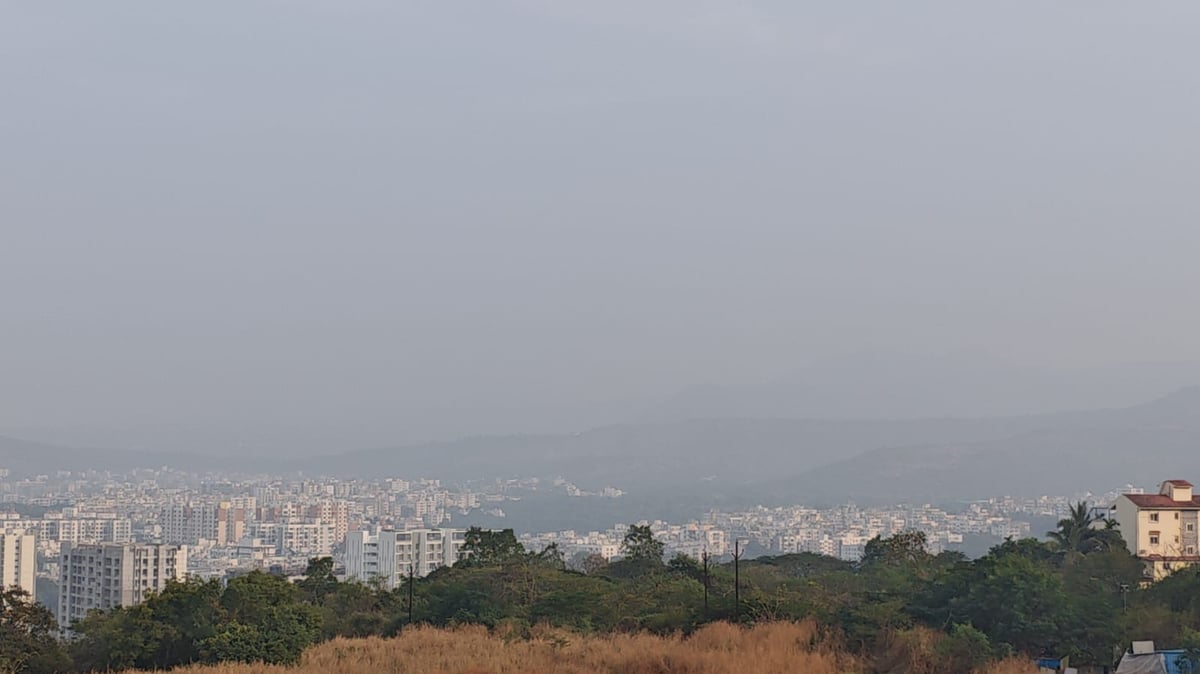Pune: Alarming Air Quality Decline in City; Pollution Levels Soar, Health Risks Increase |
The air quality in Pune is deteriorating rapidly, with the pollution level in the city crossing from moderate to poor according to the Indian National Ambient Air Quality Standards (NAAQS). This decline has raised concerns among residents and health experts alike.
Data from the Maharashtra Pollution Control Board (MPCB) indicates a significant rise in the concentration of particulate matter (PM2.5 and PM10), particularly in densely populated and high-traffic areas such as Shivajinagar, Hadapsar, and Pimpri-Chinchwad. Meteorologists attribute this decline to vehicular emissions, industrial pollutants, and adverse weather conditions that trap pollutants closer to the ground. Meanwhile, concerned residents have suggested planting more trees in their localities as a potential solution to combat pollution.
Residents speak up
Vijaya Suratkal, a resident, said, “The AQI in Pune is already crossing 100. If urgent steps are not taken, it won’t be long before it escalates to 300 or 400. In Pune, if you look at the pollutants, PM2.5 is at 65+, which is way above the WHO recommended guidelines of 15 microns. Immediate measures are needed to monitor air quality regularly, reduce vehicular emissions, implement fines for polluters, and ensure robust, clean public transport systems with bus stops every 500 meters. Transparency and accountability from the MPCB and Pune Municipal Corporation (PMC) are critical to addressing industrial, vehicular, and waste management issues. PMC must ensure that the burning of garbage on the streets is stopped.”
A Bhosale Nagar resident, Heema Chari, remarked, “If we ignore this now, emissions will only increase, leaving us with unhealthy air. We need policies and stricter enforcement to control this. Pune has a valley-like geography, which limits air circulation and causes pollutants to linger in the atmosphere longer, unlike Mumbai, where the wind is not trapped and can flow towards the sea. This natural disadvantage makes it even more critical for the city to adopt proactive measures to curb pollution. During winter, the pollution level already increases, and the burning of garbage makes it even worse. The area where I live is highly polluted due to the construction activities ongoing along Chaturshrungi road and inside residential areas.”
Lakshmi Nilakantan, a resident of Amanora Park Town, Pune, said, “The air pollution is becoming severe every day. My children go to school with an NH95 mask on every morning, and I restrict their outdoor playtime after coming from school. Children need outdoor play to stay healthy, and outdoor play helps in restricting screen time. Unfortunately, we are unable to achieve both due to air pollution. Public awareness and support from the state and central government are necessary to solve this problem. As the state and central government are now the same in Maharashtra, I am hoping for necessary measures to be taken urgently.”
Activist Raja Subram. said, “Once winter starts, Pune suffers from poor AQI. While trash burning is a significant contributor, construction and vehicles also strongly contribute to bad air. The poor air quality is harmful to the population in all age groups, and masking up seems to be the only solution.”
The Centre for Science and Environment (CSE) has alerted about the growing problem of ground-level ozone, also known as surface-level ozone and tropospheric ozone, which is a trace gas in the troposphere (the lowest level of the Earth’s atmosphere). The average concentration of this gas is 20–30 parts per billion by volume (ppbv), with close to 100 ppbv in polluted areas. The study found that Pune and Savitribai Phule University in Pune are the most chronically affected by ground ozone pollution in the Pune Metropolitan Region. The standard has been exceeded in this location for 119 days this year so far. It is followed by Gavalinagar and Thergaon in Pimpri. Shivajinagar and Nigdi in Pune have the fewest instances of ground-level ozone exceedances in the region.

